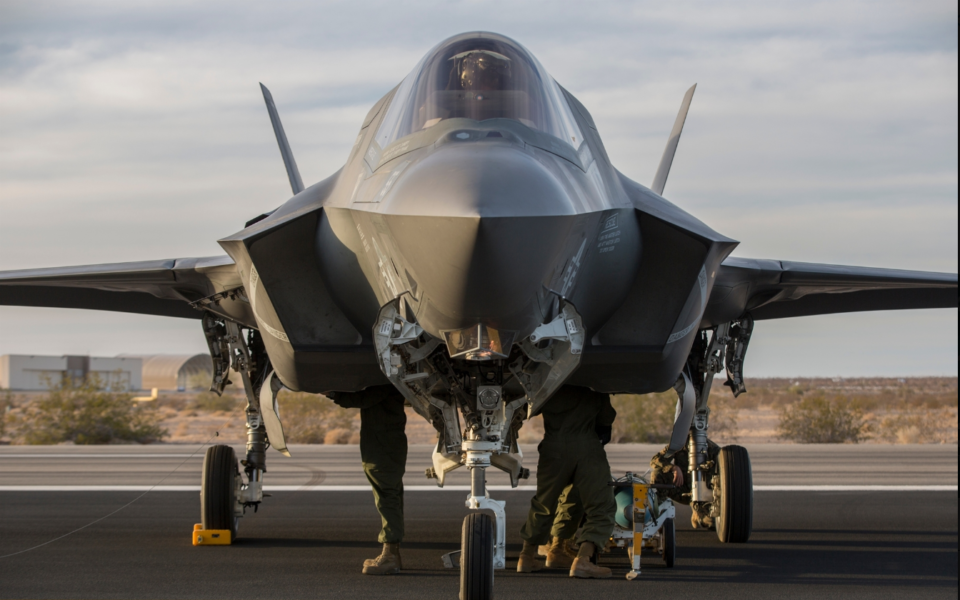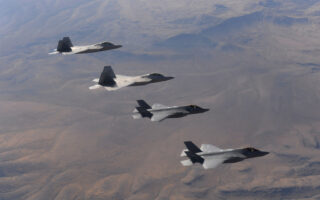The US arms sale package explained
The cost, the delivery schedules and the real operability of the weapons systems Greece will acquire

Only a few days have passed since Prime Minister Kyriakos Mitsotakis received the letter from US Secretary of State Antony Blinken informing him of the Department of State’s approval of the sale of advanced F-35 multi-mission aircraft and other weapons systems and an intense, and not always cool-headed, debate has erupted about a series of large arms procurement programs. The sale of the fifth-generation F-35s is just the most emblematic one.
Shortly after the Blinken letter was delivered, it became known that the US Navy responded positively to the Hellenic Navy’s request for participation, through co-production, in the future Constellation-class frigate construction program, an as-yet-unbuilt ship based on an Italian blueprint.
Kathimerini attempts to answer some simple questions about the costs, delivery schedules and operability of the systems included in the US sale package as formulated in the Blinken letter.
F-35s
How many planes will be acquired?
The US Letter of Offer and Acceptance (LOA) responds to the original request of the Hellenic Air Force for the supply of “20 and 20” aircraft. Essentially, the HAF requested a squadron of 20 aircraft with an option to buy 20 more. However, the final number of planes that Greece will acquire will emerge in the negotiations that will follow the receipt of the LOA. A 12+12 solution should not be ruled out.
How much will they cost?
Based on the LOA, buying all 40 aircraft will cost up to $8.6 billion. Therefore, the smaller first order from Greece will cost less. In discussions taking place in military circles in recent months, it seems that Athens is ready to allocate about $3.5 billion for the F-35 for a start. It is worth noting that the total price given by the American side includes all electronic warfare systems, simulators and training, software, support, etc. (The list of mechanical equipment is long and very detailed and widely available on the website of the Pentagon’s Defense Security Cooperation Agency, DSCA.)
When will they be delivered?
The negotiations between Hellenic Air Force and the US side could last a year or even beyond that. The Air Force leadership is already setting up at its General Headquarters precisely to avoid a protracted negotiation period. If an agreement is reached before the end of the year, the delivery of the first F-35 in 2028 cannot be ruled out, although 2029 seems a safer prediction.
Why is there no mention of weaponry?
First of all, Greece is not the only country that asked for an offer without weapons, with the intention of discussing the issue subsequently. Japan and South Korea are two examples. One of the reasons is to examine whether the F-35 can be fitted with missiles from the existing Air Force arsenal, such as the Meteor air-to-air missiles, already carried by the Rafale fighters. This is not unprecedented; the UK will certify Meteors for the F-35s operated by the Royal Air Force by 2030 and Italy is expected to do the same. The Greek F-35s will be armed, however, their payload selection has not even begun.
What investments will be required?
Since all the mechanical equipment is included in the price provided by the Americans, work is required to replace the hangars currently used by the 117th Combat Wing at Andravida for the F-4Es, which will be retired before the F-35s arrive. According to rough calculations, the cost of replacing the hangars and other work on the air base will be around €150 million.
Constellation-class frigates
What exactly is this program about?
The US Navy has chosen a design based on the FREMM frigate produced by Italian shipbuilder Fincantieri, with the intention of building 20 ships of this type. The first US frigate was supposed to be delivered in 2027, but a few weeks ago Congress was informed of a one-year delay. Greece requested its participation in this program, asking that up to seven frigates be built domestically. The acceptance by the US Navy of Athens’ participation is a success for the Greek side.
What kind of ships are the Constellation-class vessels?
They are frigates with modern radar systems, a combat information center with Aegis software, NSM anti-ship missiles and vertical launchers capable of launching a range of missiles (SM-2, SM-6, VL-ASROC, Tomahawk). Displacement is 7,200 tons and cannot be reduced, as has been sometimes reported by various sources. If Greece completes negotiations with the US and ends up proceeding with the project, this is the displacement the ship will have.
What is the cost per ship?
About as much as the cost of an FDI frigate, which is $1.2 billion (according to the latest estimates). However, the cost on the second or third frigate tends to be lower, at least in countries with a serious shipbuilding industry. Costs are a perennial “thorn” for the Greek shipbuilding industry, which in the past has exceeded time and cost limits a few times, a typical example being the Roussen-class missile boats.
When can the first one be delivered?
In this purely hypothetical question, a Greek shipyard must first be assigned the project. An answer can be provided as to when the work will start. Given that the US will get delivery of the first ship around 2027-28, even in the best-case scenario delivery of the first frigate to the Hellenic Navy should not be expected before 2032. The Constellation-class frigate is a bet that if won for Greece, will turn its navy into a true force to be reckoned with across the whole Eastern Mediterranean.
Weapons from US stock
Through the Pentagon’s Excess Defense Articles (EDA) process, the US had granted Greece the following systems:
2 C-130H military transport aircraft
These two aging US Air Force aircraft will be delivered to the Hellenic Air Force. Some say repair costs will be high. The actual extent will become apparent when an Air Force delegation examines the aircraft.
60 Bradley armored fighting vehicles
They are considered useful for the needs of the Army. Although the initial number is small, Greece wishes to invest in them.
3 Protector-class patrol boats
These coastal patrol vessels will serve the Hellenic Coast Guard’s needs.
Various trucks and trailers
Although this is the least impressive part of the offer as outlined in the Blinken letter, it is a godsend for the Armed Forces where Steyr-made trucks are still in operation. The addition of Oshkosh-built trucks, several decades newer than the Steyrs will provide instant solutions.
4 Freedom-class littoral combat ships (LCS)
Perhaps the most controversial of the elements of the Blinken letter. These are ships that did not serve the purpose for which they were originally developed and for this reason the first five of them have already been decommissioned. When discussions on strengthening the Hellenic Navy resumed last summer, Athens emphasized that there is interest in the specific ships only if no further investments are required. Navy officers will visit the US East Coast soon, where they will examine some of the ships that have not yet been decommissioned (that is, those in which initial issues were resolved). These are ships which as a whole have only been in service for 3-4 years and the latest additions for only a few months.
Blinken noted in his letter that the following Greek requests will be considered:
KC-135 aerial refueling aircraft (flying tankers)
This is a system that could give the Air Force the ability to operate unhindered at great range in the Eastern Mediterranean. Blinken also refers, in the case of the KC-135s, to surplus defense material, when it becomes available. It should be noted that the Air Force is already familiar with these aircraft, which are routinely stationed at Larissa Air Base.
New C-130J transport aircraft
A new C-130J transport aircraft costs about $130-160 million. It is obvious that the Air Force can only proceed with this aircraft if the Hellenic Aviation Industry (EAB) is restructured, in order to deal with the very important problem of maintenance and support of a type which – in its various versions – forms the backbone of Greece’s transport fleet.





